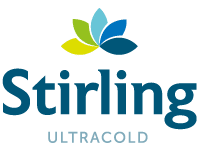There’s nothing inherently wrong with a status quo.
If all you need is a cold box to store something, a freezer is a freezer (is a freezer).
But if you need a freezer as a means to prevent sample degradation, maintain quality and potency, ensure data accuracy and consistency, protect the chain of custody, and pave the way for drug discovery and development — all while potentially saving or improving millions of lives — then the status quo of ultra-low-temperature (ULT) freezers is an engineered brake: an ongoing barrier to better. What should you stop accepting as unavoidable limitations of ULT freezers, and what should you start demanding? At least four capabilities.
Status quo #1: Temperature fluctuations + rigid constraints
Most ULT freezer manufacturers are satisfied with maintaining temperature uniformity to within +/-5°C to +/-8°C. They offer units that have a limited range of stable operating temperatures.
Slow temperature recovery is also a constant concern. Many ULT freezers struggle to get back to sample-safe temperatures, which threatens the integrity of your work. It seems like the most reliable part of the standard ULT freezer experience can sometimes be stress.
New baseline: Temperature stability + flexibility
Your work requires strict uniformity and increasingly within an environment of flexibility. Your ULT freezer should provide both.
In terms of temperature range, it should allow you to adapt to different storage needs while reducing energy consumption. You should also have the ability to optimize your storage options by isolating, grouping and storing different types of samples at their ideal, safe temperatures. Only a ULT freezer with a broad range of stable operating temperatures can do that.
In addition to being the first ULT freezer to deliver stable temperature performance with a -100 to -20°C temperature range, the Stirling VAULT100™ features a new, more robust, free-piston Stirling engine design. Why does that matter? For one, its M6D engine has only a few moving parts in contactless linear motion — supported by gas bearings. There’s no need for oil and no stop/start temperature control, so traditional failure modes have been reduced. More importantly, this design allows for continuous modulation, which reduces temperature swings in steady-state operation and provides incredible temperature stability. The VAULT100, the first ULT freezer with a -100 to -20°C temperature range, exceeds regulatory thresholds with a new thermodynamically engineered cabinet design that sustains temperature uniformity of +/-3°C at -80°C. With better steady-state temperature stability and uniformity at -100°C than most ULT freezers at -80°C, it delivers the best temperature uniformity and adherence to setpoint in the market: +/-3°C* (nine-position) uniformity and +/-0.2°C* (single-position) stability at -80°C.
Status quo #2: Big carbon and infrastructural footprints + high-cost integration
ULT freezers are notorious for their high energy consumption, using upward of 23 kWh per day in some cases. On the assumption that energy is produced by fossil fuels, operating them creates a large carbon footprint. The strategy for reducing that footprint is often simplistic and one-dimensional (e.g., running freezers at warmer temperatures using ENERGY STAR® freezers).
Most ULT freezers also require infrastructural changes to accommodate their unique voltage needs and power distribution backups. These necessitate expensive upgrades to pharmaceutical manufacturing facilities, including heavy HVAC systems to offset the sizable heat output of less-efficient ULTs. These accommodations stand in direct competition to internal carbon reduction and climate action initiatives. When facility space is limited (and it always is), every square foot is money. So ULT freezers exist in a never-ending conflict between floor space usage and freezer storage volume.
New baseline: 360-degree sustainability + seamless integration
You shouldn’t have to sacrifice performance or energy efficiency to save money or reduce your carbon footprint.
Stirling Ultracold’s newest VAULT100 upright ultra-low freezer, for example, uses just 5.8 kWh** per day (steady-state) — far more efficient than traditional compressor-based units, even when operating down to -100°C setpoint.
ULT freezers also shouldn’t require heavy investments in facility and infrastructure to operate them effectively. And if they’re not maximizing storage volume, they’re wasting valuable space. The VAULT100 offers the largest storage volume per square foot of floor space, significantly reducing your infrastructural footprint, plug load and carbon footprint. Its narrow design allows for more samples to be stored in tight spaces, enabling increased capacity with smaller door swing clearances needed for sample accessibility.
A comprehensive sustainability and seamless integration approach extends to facility information systems. The VAULT100 makes it easier to incorporate ULT operation and monitoring data directly into your existing facilities’ building management and automation systems. The built-in ethernet port and BACnet interface make it easier to integrate real-time event monitoring with an existing building management/building automation system
The new status quo is a ULT freezer designed to be as cost-, space-, time- and resource-efficient as possible, working with your current workflows and needs.
* Within testing protocol margin of error
** ENERGY STAR Final Test method at -80°C (112°F) setpoint
Status quo #3: Reactive reliability
Freezer failures aren’t a planned maintenance activity. That’s why they’re so disruptive and costly.
But if your freezers’ health and operation are clouded in uncertainty, then there’s no way around disruption. For a piece of equipment protecting contents that are so valuable and necessary as a ULT freezer, reactivity is too high a risk and too costly a mistake.
But most ULT freezers offer little more than general maintenance guidelines and schedules.
New baseline: Predictive analytics
You should be able to, in a large sense, plug your ULT freezer in and not worry about it. The new VAULT100 user interface, which includes onboard predictive analytics and freezer diagnostics, is designed to let you do just that. Using diagnostic lights like those on a car’s dashboard, it allows you to be more in touch with your work than any other ULT freezer on the market. Instead of looking in the “rearview mirror” at issues once they’ve already occurred (which is all traditional monitoring can offer), you’ll have a clear view down the road — and a chance to prepare. Predictive analytics offer specific guidance about preventive maintenance and proactive service recommendations unique to your unit, its current operating conditions and stage of life, helping you avoid unexpected cooling failures and the potential loss of sample integrity that come with them.
Status quo #4: Inertia
This status quo is also known as “Good enough is good enough.”
Make a mental list of all the recurring issues you have with your current ULT freezer, i.e., the ways in which it contradicts your workflow, priorities and best interests. They all have one thing in common: inertia.
New baseline: Proactive, continual improvement
The most important thing you should demand from a ULT freezer manufacturer is proactive, continual improvement. Your needs are evolving, so your tech should be too.
We’re not operating under the assumption of “good enough.” Our immediate and long-term goals are to advance temperature uniformity, expand temperature range, innovate cabinet and door designs to enhance temperature performance, and deliver industry-leading temperature stability. We’re prioritizing increased energy efficiency by optimizing heat exchange and freezer design as well.
It’s not just a matter of remaining competitive. Or maintaining quality products and corporate integrity. It’s a matter of respect for the critical, life-changing work of drug developers and manufacturers.
Your ULT freezer may seem like a small portion of your workflow — an afterthought. But if anyone knows the importance of small things and the difference even microscopic changes can make, it’s you.
With that in mind, a better ULT freezer could be the only thing standing between you and the continued integrity of everything you do. In which case, you should demand a system that’s engineered to break the status quo.








